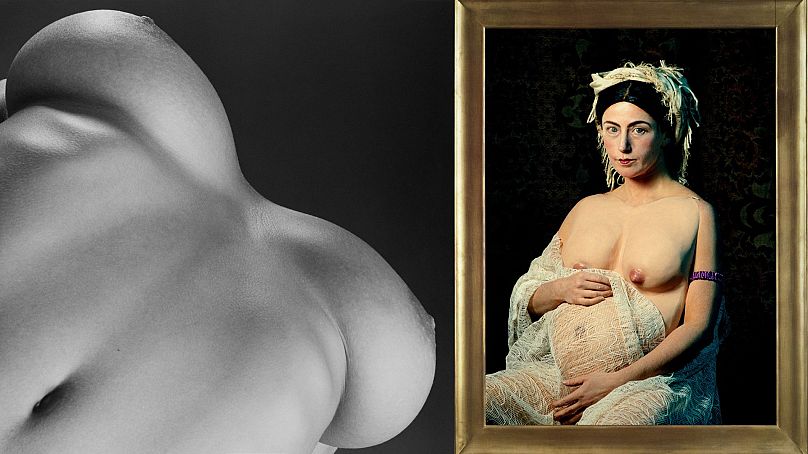The show reflects on a range of themes including motherhood, empowerment, sexuality, body image and illness.
A collateral exhibition at the 2024 Venice Biennale will be dedicated to the iconography and symbolism of breasts.
They are a fixture of art, whether it’s a 16th-century devotional painting of the breastfeeding Virgin or a wearable breastplate from 20th-century fashion design, as the show highlights.
‘Breasts’, at Palazzo Franchetti, showcases works from old masters to modern publicity, spanning the realms of painting, sculpture, photography and film.
Curated by Carolina Pasti, the show reflects on a range of themes including motherhood, empowerment, sexuality, body image and illness. It also investigates how breasts act as a catalyst to discuss socio-political realities, challenge historical traditions and express personal and collective identities.
The show will donate 30 per cent of catalogue funds to cancer research foundation Fondazione IEO-MONZINO and aims to promote awareness of breast cancer through the channel of art.
Breasts from the 16th century to contemporary art
Visitors will enter the five-room exhibition via Booby Trap, a pink passage inspired by the colour of breast cancer awareness and featuring a ceiling of 35 breast lights.
The first room examines the historical representation of breasts and the construction of narratives related to the female body. It will feature the 16th-century painting 'Madonna del Latte (Madonna Breastfeeding the Child)', which influenced Cindy Sherman's 'History Portraits' and also highlights how contemporary artists like Richard Dupont, Teniqua Crawford and Sherrie Levine incorporate Renaissance elements into their figurative paintings.
In the second room, Pasti explores breasts as an inspiration for sculptural practices. The space includes surrealist artworks by Marcel Duchamp like 'Prière de toucher (Please Touch)', featuring a foam-rubber breast affixed to a book cover, and Salvador Dalí's 'Nude with Snail Breasts' - a fetishised and otherworldly representation of women.
Through the lens of photography, the third room examines the impact of digital media on the representation of breasts. The Surrealist photography of Robert Mapplethorpe and Irving Penn employs dreamlike, symbolic, or abstract elements where breasts were sometimes portrayed as mysterious landscapes or abstract forms, detached from their usual context.
The fourth room features artists who fragment, abstract and deconstruct breasts in their art. By infusing a sense of humour, the works challenge rigid notions surrounding the female form, disrupting conventional ideals and leading to a broader conversation about body positivity and self-acceptance.
Allen Jones's mannequin resonates with historical influences such as armour and religious vestments, whereas Charlotte Colbert’s 'Mastectomy Mameria' is a monument to the power, regenerative nature and potential of the body.
A film by Laure Prouvost entitled Four For See Beauties will be shown in the fifth room. Shot in 2022, the fifteen-minute feature depicts three women and the artist’s newborn child alongside an array of sea creatures recalling the stages of human life transformation.












